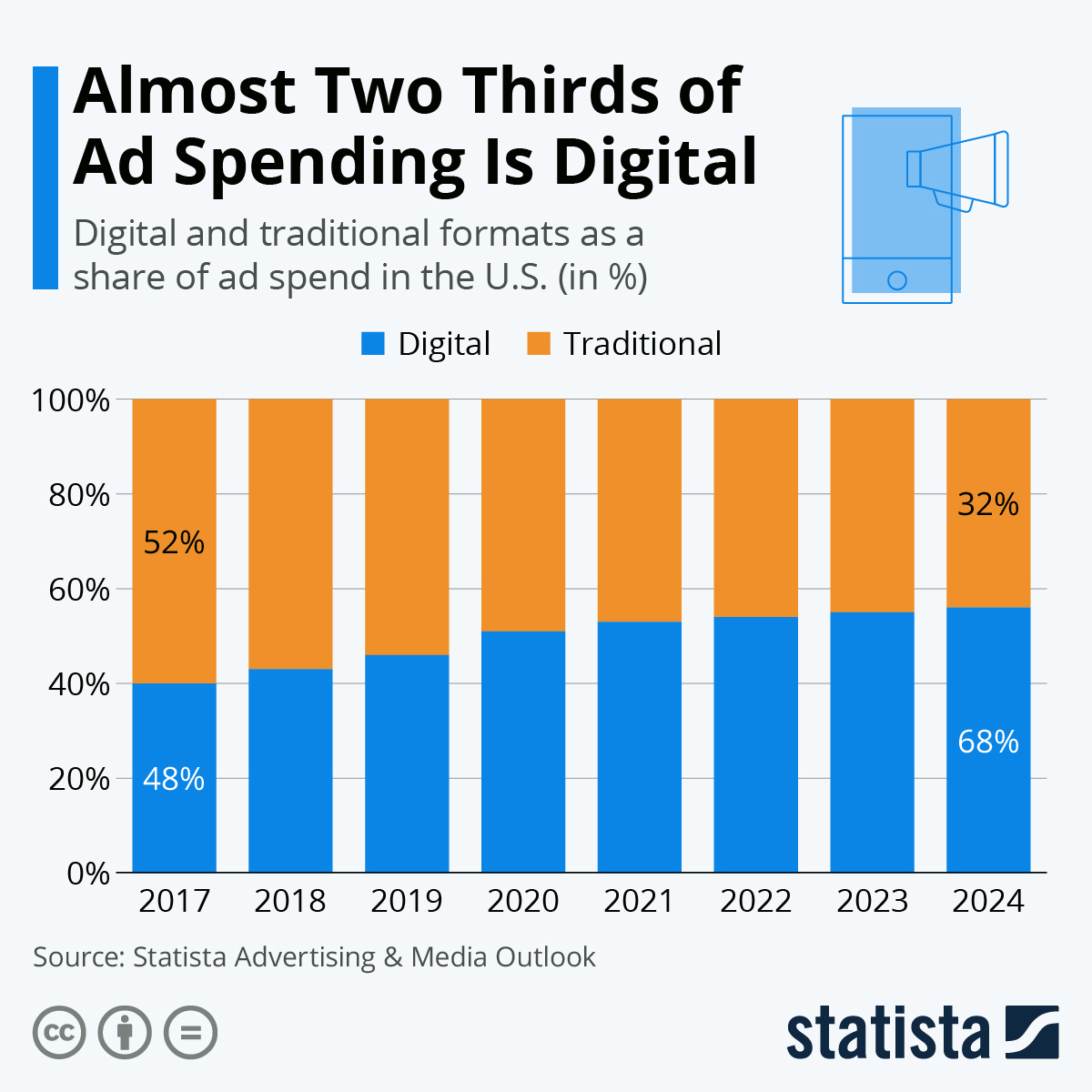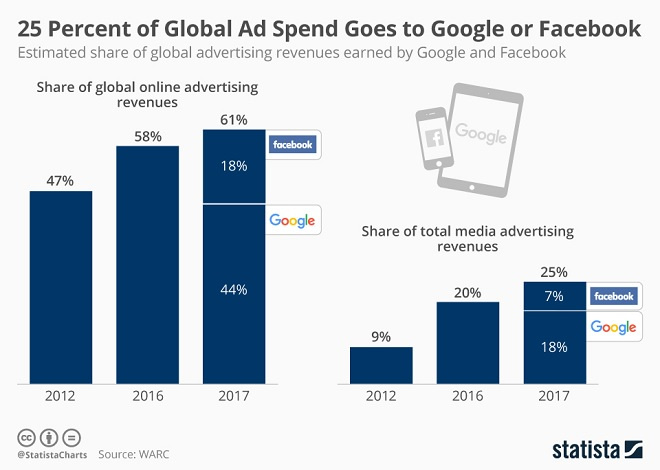Source: Statista
In 2023, digital advertising in the United States will for the first time make up more than two thirds of total advertising industry spending. According to Statista Advertising & Media Outlook, the share of digital ad spend is expected to reach 61 percent this year.
The paradigm shift from analog to digital runs through most aspects of modern society and advertisement has been on the forefront of the change. Losses in circulation and the reach of print media, as well as relevant age groups turning away from broadcast TV, is making advertising through traditional avenues increasingly unattractive. At the same time, digital ad formats are diversifying.
According to Statista estimates, total ad spending will reach almost $590 billion in 2020. Compared to the previous year, spending is expected to be down around $10 billion because of the coronavirus pandemic.


